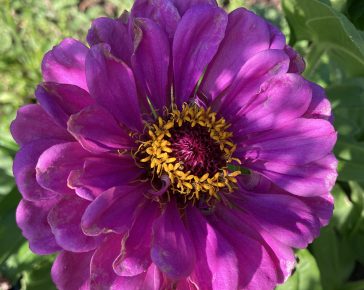We find that there is a lot of blurby stuff out there about growing flowers specifically for cutting, but it needn’t be confusing. You can easily grow a beautiful range of different flowers using our plug plants, and there are a couple of simple things you can do to make sure that any of your blooms look great in the vase.
Our plug plants come with a growing guide
This details what spacing you need to leave between plants for them to thrive, as well as giving details as to whether or not the plants are perennials/annuals etc. If in doubt, we’d suggest you plant 20-30cm apart and treat them as annuals and pull them up after they’ve finished flowering (and before they produce seeds if you don’t want them to self-seed.)
Grow them in a sheltered sunny spot, ideally in a bed or border
Getting the site right is probably the most important thing when it comes to growing cut flowers. If they have shelter and plenty of sunshine, they should do well, and in theory the only jobs you’ll need to worry about will be watering, weeding and harvesting.
Harvest flowers in the morning
Once the plants start to flower, the best time to harvest them is in the morning. You may find that when you harvest in the middle of the day, the plants wilt quickly in the vase, whereas if you harvest in the morning they remain healthy-looking and vibrant.
Mix and match – be free and easy!
You could take all the time in the world to pick the exact flowers you need to create a beautiful arrangement, and we’re right behind you if that’s you. If you’re pushed for time, or if you doubt your creative skills when it comes to arranging flowers, then please know that you can’t really go wrong if you pick a couple of big blooms (eg Lupin or Larkspur), a handful of smaller blooms (eg Nigella or Cosmos), and some light feathery flowers or foliage (Gypsophila is an excellent all-rounder for this) to hold it all together.
A Great Combo
Try these four blooms together for easy posies through summer





